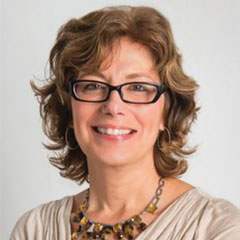
Michelle Russell
Age discrimination remains a significant and costly problem for workers, their families, and our economy,” Victoria A. Lipnic told public media site Next Avenue. Lipnic, who is acting chair of the U.S. Equal Employment Opportunity Commission (EEOC), said that she’s found that there’s a “level of horror and sarcasm about aging that we would find repulsive about race and gender.”
When the head of the EEOC says that age bias remains our last acceptable prejudice, it’s time to pay attention. The three individuals we interviewed for Convene’s June cover and CMP Series story — Ashton Applewhite, Patti Temple Rocks, and Chip Conley — have written books on this topic, seeking to chart a different path forward.
We have no choice but to change our perspective. We are living longer and our population is shifting — by next year, there will be more 55-year-olds on the planet than 5-year-olds. Joseph F. Coughlin, founder and director of MIT’s AgeLab, said this “represents the most profound change that is guaranteed to come to [society].” As Coughlin writes in his book The Longevity Economy, “There may be other big shifts headed our way — related to climate change, say, or global geopolitics, or technological advancement — but their particulars are still up in the air. We can only speculate about how London will cope with sea-level rise, or Tokyo with self-driving cars. But we know exactly how global aging will unfold.”
For our story, we focused on age discrimination against workers aged 50 and older. That is only one aspect of how to address this huge demographic shift, but it’s an important one. If we push people out of the workforce in their 50s and 60s, that means that they may have another three or four decades left to live. How will they fill those years? How can we continue to benefit from their wisdom and experience?
We know that ageism isn’t just confined to prejudice against older people. Many of us Boomers are proud parents of accomplished Millennials and take exception when they are stereotyped in a negative way. A common complaint among Gen Xers is that they are largely ignored as a generation. We didn’t want to give other generations short shrift by homing in on older workers. But, speaking as one, we feel the most vulnerable.
In Lastingness: The Art of Old Age, author Nicholas Delbanco writes that even as we age as a society, we remain obsessed with youth. “If younger is better it doesn’t appear that youngest is best; we want our teachers, doctors, generals, and presidents to have reached a certain age. In context after context … we’re more than a little conflicted about elders of the tribe; when is it right to honor them, and when to say ‘Step aside’?”
A truly diverse workforce embraces all ages and respects what each generation brings to the table. That’s our challenge in the workspace as well as in business event settings. How do we create environments in which all generations feel welcome and can learn from and share with one another?
At Every Stage
- One way to welcome all ages at your events is to make child care available. Doing so enables two important contingents, potential attendees and subject matter experts who are parents of dependent children, to give your event stronger consideration. We spoke to four event organizers for their best advice on thinking that child care initiative through.
- And don’t miss our annual Salary Survey results, to compare notes about your salary — and just about everything else that comes with your job — with your peers.
Michelle Russell is Editor in Chief of Convene.
